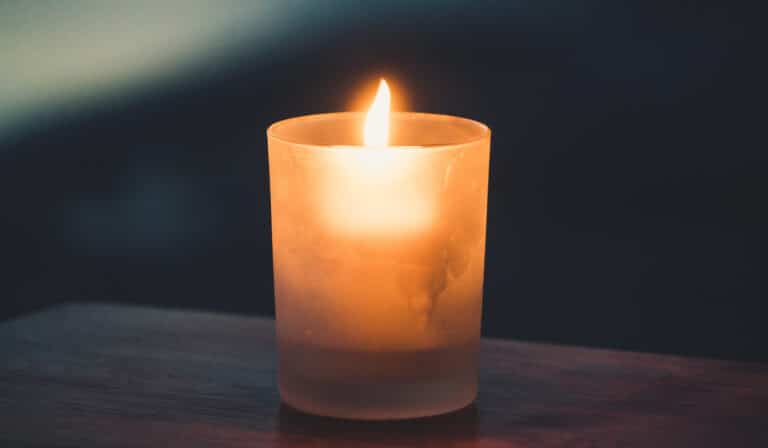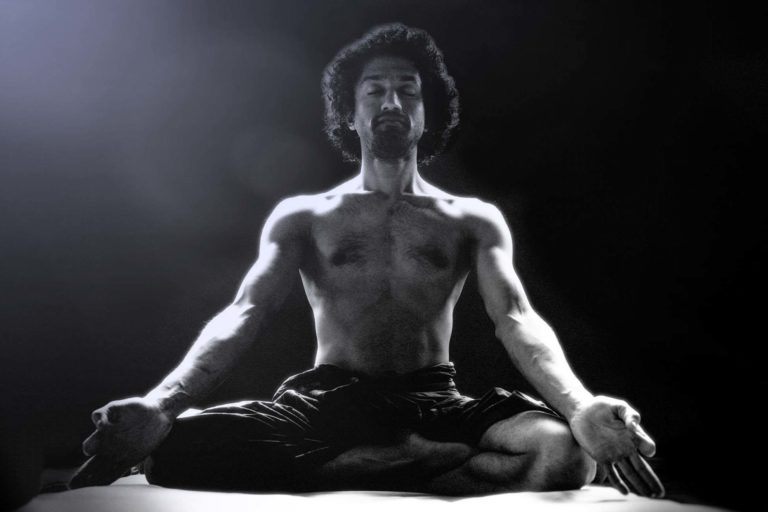You might have heard that the best way to learn yoga is with a master. But what if you don’t have access to a one and want to start yoga on your own? Is learning yoga alone at home a lesser way of learning as many yoga teachers will have it? What are the obstacles and disadvantages? Could there even be advantages? In this article, I will look into this. You will see that with a rigorous approach, you will be just fine practising yoga alone. However, to learn advanced yoga, you need the special conditions and guidance that only a master can provide.
NB! When I talk about yoga, I am not only referring to postural yoga, the yoga tradition includes a whole range of techniques, such as breathing exercises and meditation.
Many yoga teachers started on their own
When I started practising yoga in 1999, I did it on my own at home. At that time, I practised several hours every day, and I was immediately impressed by what it gave me. Since then, I have practised many thousands of hours and for the most part alone, without a guide. Many other yoga teachers that I know began similarly.
My own master, Swami Janakananda, discovered yoga with a pantomime group. When he wanted to learn pranayama, he did that thanks to a book written by an Indian pranayama expert. Janakananda meticulously followed his instructions and practised pranayama four times a day. That led him to a remarkable mastery of his breath.
A few years later Janakananda met his master, Swami Satyananda, the founder of the Bihar School of Yoga. By then he was already an advanced practitioner. Thanks to the training he received in Satyananda’s ashram, he was, of course, able to take his practice even further.
People have learnt yoga on their own for more than a hundred years
Learning and practising yoga alone is nothing new. Yogi Ghamande, an Indian master, published in 1905 the Yogasopana Purvacatuska, one of the first mass-printed yoga books. This beautiful book features high-quality halftone engravings, most of them depicting pranayamas, mudras and seated asanas. The author encourages self-study and suggests that his readers contact him by mail for personal guidance. This book may be the first example of a yogic distance course.
Medieval yogic texts, on the other hand, emphasize the necessity to learn with a master. Once the student has acquired the techniques, they should practice alone. The Gheranda Samhita, that is probably from the 17th century suggests that the yogi should build a cottage dedicated to yoga practice. The yogi should live here and practice the methods learned from the master. Nowhere in the ancient text do we see references to the kind of collective yoga classes that are so common today.
Who can learn yoga alone at home?
Those who learn yoga by themselves at home are usually particularly motivated. They can get through their practice without the encouragement of a guide or a group. They have assiduity and discipline, essential qualities to succeed in any domain, especially yoga.
But they have something else of uttermost importance: a space to practice without being disturbed. In rare cases, this is a room dedicated to yoga. Usually, it is a space that can quickly be cleared. For many yoga practitioners, the lack of a place suitable for practice is a strong reason to take collective classes.
The advantages of practising yoga at home
The only option one has without a qualified teacher nearby is to learn yoga alone at home. But it is not only from necessity that you might want to practice this way. As a solo practitioner, you can decide for yourself what to practice, and do it following your own rhythm. You can practice at your level and without having to spend extra time getting to class. On top of it, it will cost you next to nothing in contrast to collective yoga classes.
When I was a beginner, I did yoga alone twice a day in the small student flat where I lived. I would never have been able to maintain that rhythm had I practised with a teacher. My meagre budget would not have allowed for it. I was also able to adapt my practice to my daily rhythm. That made it possible for me to immerse myself in yoga while at the same time, attend my lectures at the university.
Finding the teacher
The word yoga holds so many different meanings that it is next to useless. It covers practices ranging from sport to mind-expanding meditations. Therefore finding a teacher who has a vision of yoga that resonates with your own might be a daunting task. That is why some people find themselves practising alone, even though they have teachers nearby.
If you practice at home with books, audio recordings or videos, your choice of teachers is much broader.
Choose your support and stick to it
At the time I got into yoga, I had a book as my only guide. Today there is much more aid for self-studying yogis. In addition to books and DVDs, many teachers make their teachings available online. The challenge today is to choose between the mass of information, styles and teachers available.
I had been looking for yoga books on and off for years at public libraries. When I finally found mine, I could feel straight away that it was the beginning of a remarkable journey. I advise you to follow your intuition as well. Find a style that suits you and stay with it. To get results, it is not enough to sniff the surface.
The statistics of yogic self-study
In a 2016 IPSOS study in the United States paid by the Yoga Journal, only 48% of the responding yoga practitioners said their knowledge of yoga comes from classes guided by a teacher. 36% practised thanks to information found on the internet, 19% with online audio or video, 18% with DVD and VHS and 13% thanks to books.
Most yoga practitioners combine these sources. What is striking is that according to the study, more than 50% of the respondents never practice with a teacher.
Disadvantages of practising yoga alone at home, and how to overcome them
The flip side of the flexibility you get when you learn yoga alone at home is that there is no one supporting your practice. It all depends on your discipline.
In the old days, when self-studying practitioners were relying on books, then considerable investment in time was needed to memorize practice sequences in advance. Nowadays, following recorded classes, you get almost the same advantages as when practising with a teacher.
In our tradition, we teach with verbal instructions without showing any poses. This way of guiding results in a more profound practice and that is why I am against using videos. On Forceful Tranquility, I guide yoga with audio recordings of verbal instructions. To prepare for new practices, you study a written description in advance.
Does learning yoga alone at home without a teacher put you at risk?
Classical yoga and meditation are low-risk practices. Now that does not mean that all yoga practices are suitable for everyone at every given moment. Listening to your body and using common sense is usually enough. By progressing slowly, you become conscious of your limits and can identify potential problems before they get worse.
Keep in mind that instructions in books, DVDs, online yoga sites as well as in collective yoga classes are usually aimed at healthy individuals. Alternatives to practices are sometimes mentioned, but you will always have to decide for yourself if you think that the exercise is suitable for you. There is a limit to how much attention a teacher can give to an individual student when leading a group.
Also, remember that yoga teachers are not health care professionals. They might be able to give you good advice on how to adapt your practice to specific needs, but you should always use your good judgment. You know your body better than anyone.
The bottom line is that practising at home is not riskier than participating in a yoga class.
When do you need the help of a teacher?
To learn yoga alone at home or in a teacher-led class is excellent. But discovering the depth of yoga depends on more than just following technical instructions. You need to have the right living conditions, certain types of food and everyday activities that harmonize the effects of the practices. You also need to develop favourable mental structures and attitudes.
To get these favourable conditions, yogis usually practice the most advanced yoga techniques in an ashram, a living place dedicated to yoga practice. To take part in a retreat in an ashram under the guidance of a master can be an inspiring experience. It can allow you to absorb yogic qualities and to learn how to integrate the effects of advanced yoga.
After a good yoga and meditation retreat, you will enjoy the benefits for a long time. The time the effects last depend on the duration and intensity of the retreat. The retreat is also going to give you inspiration for your daily practice.
Conclusion – Practicing yoga alone at home or not?
To learn and practice yoga alone is not a secondary option. On the contrary, if you have the personality for it, self-study comes with real advantages. Most challenges of self-practice can be overcome using books and online learning.
But, to learn advanced yoga or to experience the full potential of basic practices, you need to practice under exceptional conditions, under the guidance of a master.




